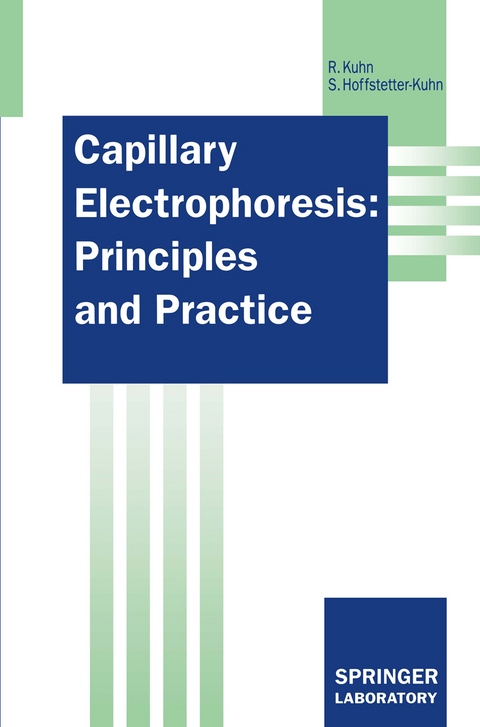
Capillary Electrophoresis: Principles and Practice
Springer Berlin (Verlag)
978-3-642-78060-8 (ISBN)
Capillary electrophoresis (CE) is a brand-new analytical method with the capability of solving many analytical problems very fast and economically. CE will be implemented in almost every analytical laboratory in industry, service units and academia in the near future, the most important fields of CE application being pharmaceutical and biochemical research and quality control. The authors have exhaustive practical experience in the application of CE methods in the pharmaceutical industry and provide the reader with a comprehensive treatment of this method. The main focus is on how to apply the method and how to solve problems in the laboratory. Physico-chemical theory is dealt with in depth where necessary to understand the underlying separation mechanisms or the influence of different instrumental parameters. An addendum includes tables on the preparation of buffers and recommended further reading.
1 Introduction.- 1.1 Safety Considerations.- 1.2 History.- 1.3 Nomenclature.- 2 Basic Principles.- 2.1 Basic Electrophoretic Separation Modes.- 2.2 Set-up for Capillary Electrophoresis.- 2.3 Theory of Electrophoretic Migration.- 2.4 Determination of Effective Mobilitiy.- 2.5 Electroosmosis.- 2.6 Performance Criteria.- 3 Factors Influencing Performance.- 3.1 Fundamental Dispersive Effects.- 3.2 Operational Parameters.- 3.3 Electrolyte System.- 4 Instrumentation.- 4.1 Injection.- 4.2 Detection.- 4.3 Capillary Column.- 4.4 Sample Collection.- 4.5 Commercial Instruments.- 5 Techniques.- 5.1 Capillary Zone Electrophoresis.- 5.2 Capillary Gel Electrophoresis.- 5.3 Micellar Electrokinetic Chromatography.- 5.4 Capillary Isotachophoresis.- 5.5 Capillary Isoelectric Focusing.- 5.6 Electrochromatography.- 5.7 Hyphenated Techniques.- 5.8 Special Techniques.- 6 Qualitative and Quantitative Analysis.- 6.1 General Aspects.- 6.2 Influence of Injection.- 6.3 Method Validation.- 7 Applications.- 7.1 Small Ions.- 7.2 Sulphonates and Alkylsulphates.- 7.3 Drugs and Natural Products.- 7.4 Neutral Substances.- 7.5 Herbicides.- 7.6 Amino Acids, Peptides and Proteins.- 7.7 Carbohydrates and Their Derivatives.- 7.8 Nucleotides, Oligonucleotides and Nucleic Acids.- 7.9 Chiral Molecules.- 7.10 Complex Samples.- 8 Appendix 331.- 8.1 Buffer Tables.- 8.2 Derivatization Procedures.- 8.3 Glossary.- 8.4 Manufacturers' Directory.- 8.5 Further Recommended Reading.- References.
| Erscheint lt. Verlag | 8.12.2011 |
|---|---|
| Reihe/Serie | Springer Lab Manuals |
| Zusatzinfo | X, 375 p. |
| Verlagsort | Berlin |
| Sprache | englisch |
| Maße | 155 x 235 mm |
| Gewicht | 586 g |
| Themenwelt | Naturwissenschaften ► Chemie ► Analytische Chemie |
| Schlagworte | Analytical Chemistry • Chemische Analyse • Chemistry • Electrophoresis • Elektrophorese • Separation Techniques |
| ISBN-10 | 3-642-78060-1 / 3642780601 |
| ISBN-13 | 978-3-642-78060-8 / 9783642780608 |
| Zustand | Neuware |
| Haben Sie eine Frage zum Produkt? |
aus dem Bereich


